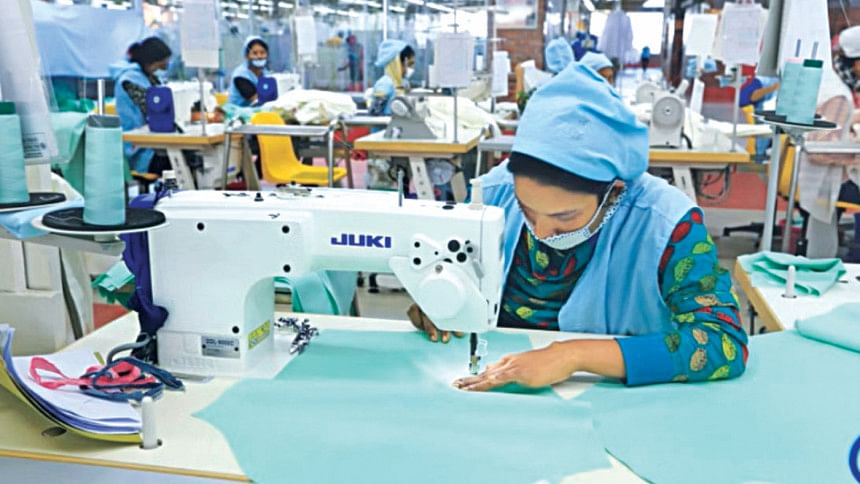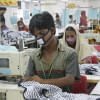Buyers ready to pay more for value-added garments

International clothing retailers and brands have suggested that local garment suppliers produce more value-added garment items for better prices as work orders may rebound after the general election of the country next year.
Bangladesh needs to come out from the production of basic garment items as the local suppliers cannot make a profit with producing low-end mass products.
Sometimes many suppliers even cater to work orders below their production cost merely to keep their units running with the hope of a better future.
The suggestions came at a meeting of nearly 35 major international clothing retailers and brands with leaders of the Bangladesh Garment Manufacturers and Exporters Association (BGMEA) at the association's office at Uttara in Dhaka.
At the meeting, the BGMEA asked to increase sourcing prices for per unit of garments as the factories are implementing an increased salary rate for workers from December 1.
In August last year, a study from International Trade Centre (ITC) said Bangladeshi garment manufacturers receive rates that are 32 per cent to 83 per cent lower than the highest prices paid to suppliers in other countries.
For instance, men's woven cotton trousers made in Bangladesh were sold for $7.01 per piece in 2020, which was 9.20 per cent below the global average of $7.72.
Vietnam received $10.76 per piece while Sri Lankan and Indian exporters got $8 and $8.41, respectively, for the same product.
Similarly, the locally made men's cotton jeans were sold at $7.81 apiece, again 7.20 per cent down from the global average of $8.41. Vietnam received $11.55 by selling a similar item, according to the study.
The buyers are ready to pay higher if Bangladesh produces high value-added garment items, said a European major retailer who was present at the meeting, asking not to be named.
He said the inflow of work orders in Bangladesh was a bit low now because of geo-political issue and for political instability but the inflow of work orders would get better after the general election of the country.
The buyers in the meeting said they would raise the prices with the new work orders in line with the salary hike of the workers from December 1.
Buyers' perception on Bangladesh is also changing as the local suppliers are also producing value added garment items, said a majority of the buyers present at yesterday's meeting.
Faisal Samad, a director of the BGMEA who was present at the meeting, said buyers assured them that they would increase prices in line with the hike in workers' salary.
Nearly 30 percent of direct costs will increase because of the salary adjustments, he said adding that a factory that used to pay Tk 4 crore in salaries in a month now would have to pay another Tk 1.50 crore.
"We have got them to understand to adjust the price for per unit garment item at a higher level," Samad said.
At yesterday's meeting the buyers who were present accounted for more than 40 percent of the total garment exports of $47 billion last year, he added.
After the meeting, BGMEA President Faruque Hassan said the retailers and brands pay lower prices for Bangladeshi garment items mainly taking into consideration the country's image, which they have already mentioned.
They always put pressure down the local supply line seeking lower prices, he said.
Hassan also mentioned two other reasons for the lower prices, including overcapacity in some garment items and unhealthy price competition among the local suppliers, which the buyers take advantage of.
Following such unhealthy competition, some 39 percent of factories cater work orders below their production costs sometimes to keep their factories running as they will have to face huge losses if the units are kept shut, he said.
However, the image of the country and the sector has brightened enough with the strengthening of workplace safety and construction of LEED certified green garment factories in recent years, Hassan said.
As a result, the international retailers and brands started increasing the unit price in recent years for production of value-added garment, adjusting with the higher prices of raw materials and freight charge and brightening the image, he added.

 For all latest news, follow The Daily Star's Google News channel.
For all latest news, follow The Daily Star's Google News channel. 








Comments